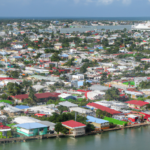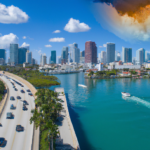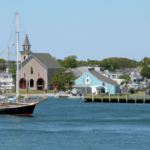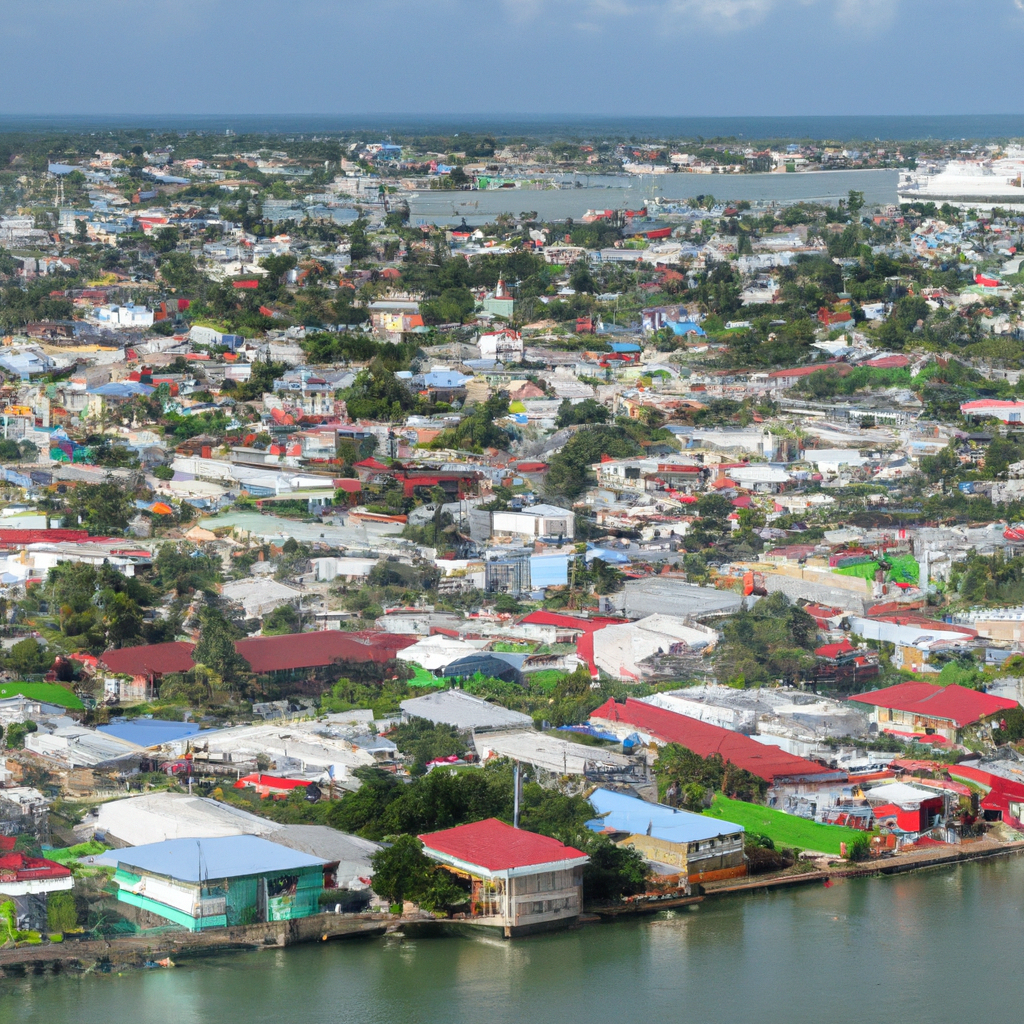
Diving the Great Blue Hole in Belize: An Unforgettable Adventure:
Explore One of the World’s Most Breathtaking Destinations:
Are you ready to explore one of the world’s most breathtaking destinations? Diving the Great Blue Hole in Belize offers an unforgettable experience filled with stunning landscapes, rich history, and unique cultural treasures. Whether you’re an adventurer, a history buff, or someone seeking pure relaxation, this destination has something for everyone.
The 5 Best Things for Couples to Experience in Diving the Great Blue Hole:
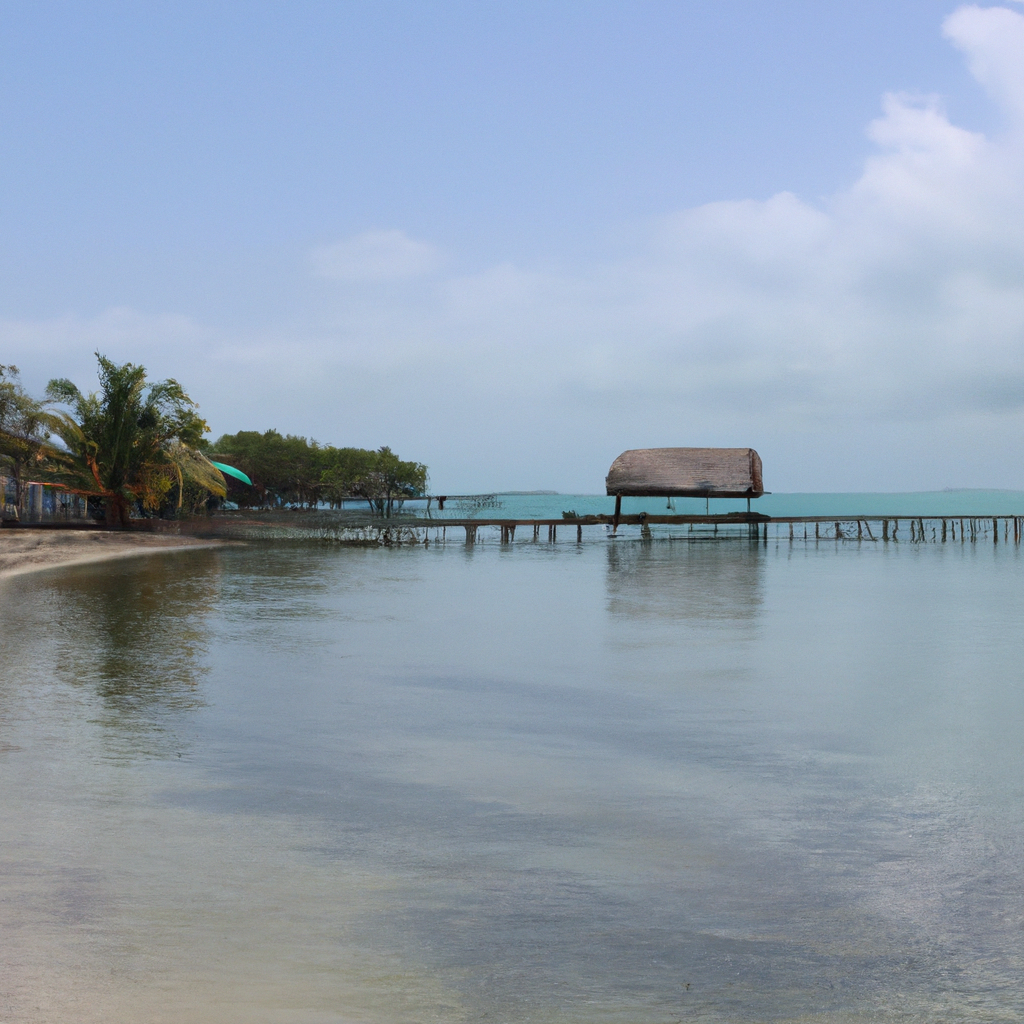

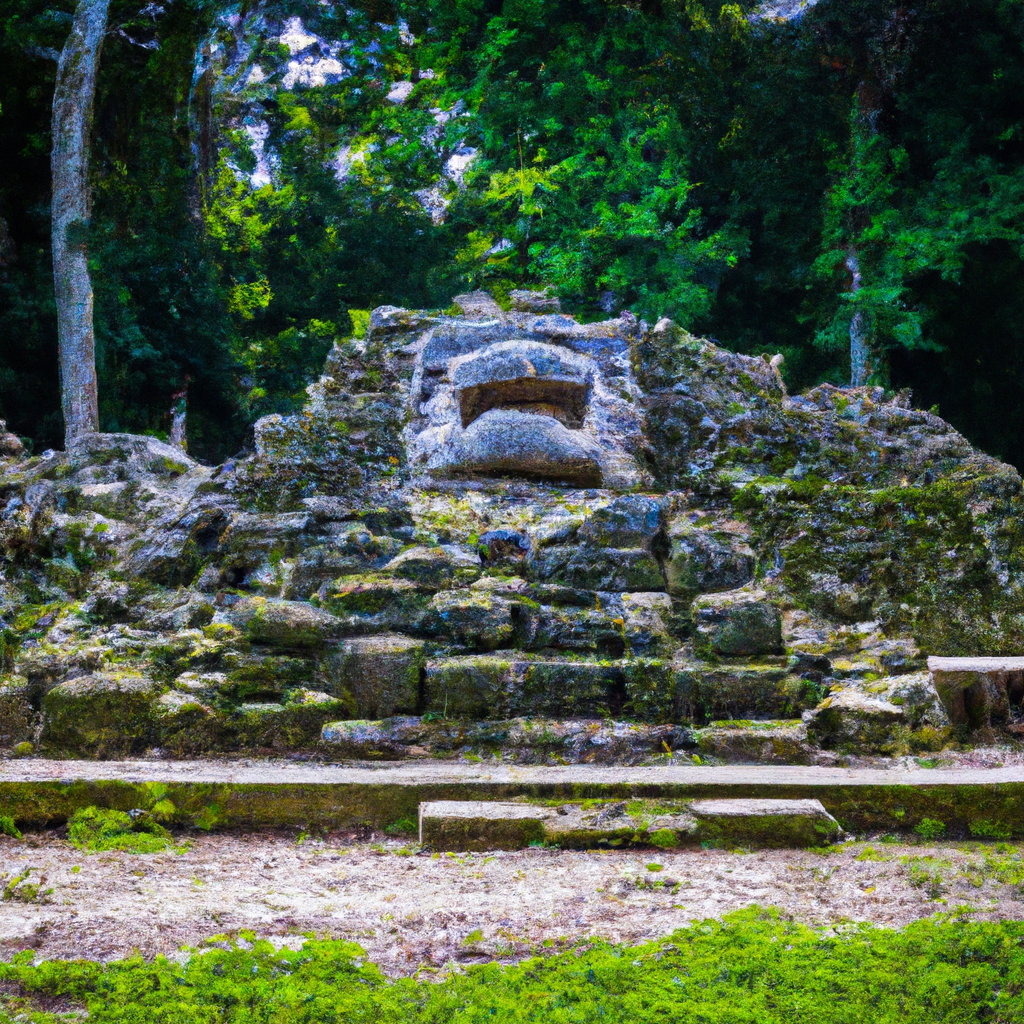
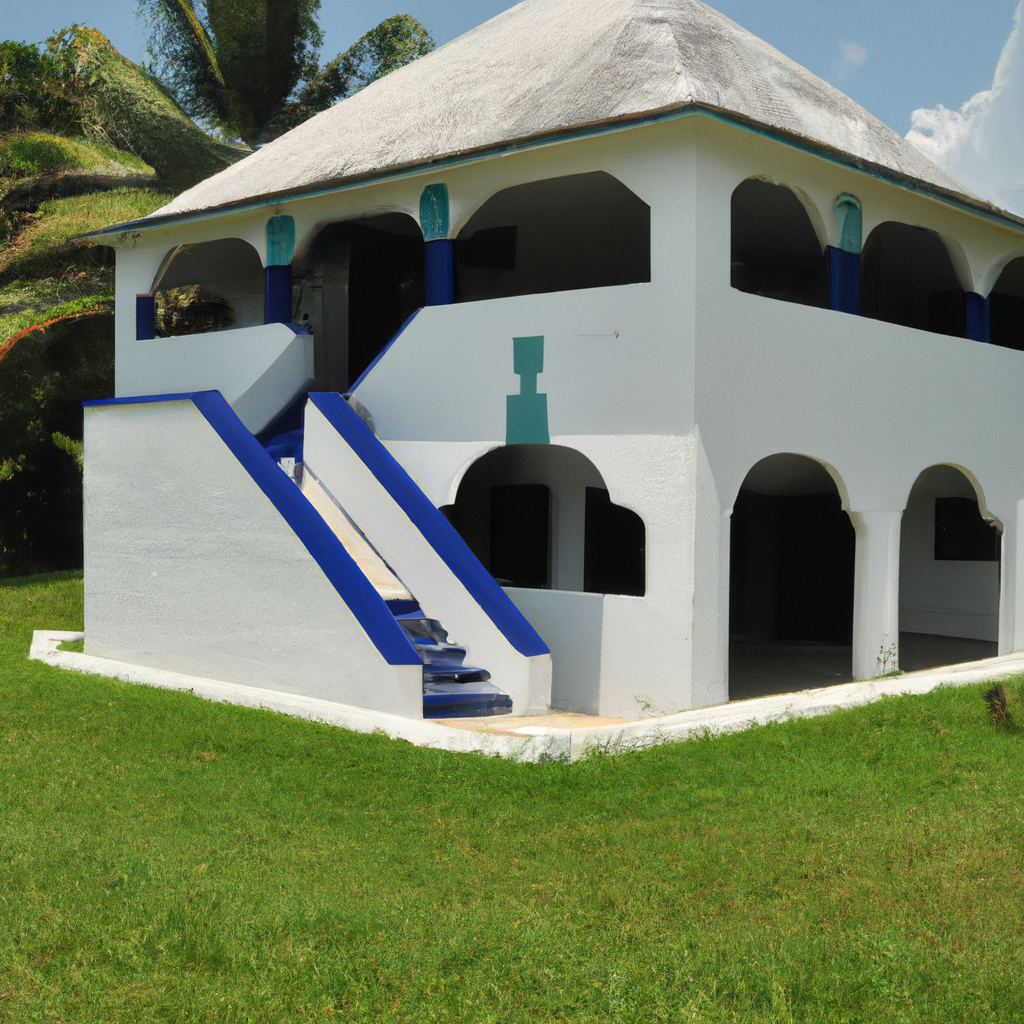
Natural Wonders
Crystal-Clear Beaches: Imagine finding yourself on breathtaking pristine shores where the sands are soft and golden, and the waters are an inviting shade of turquoise. These beaches, particularly those surrounding the Great Blue Hole, are not just visually stunning but also perfect for sunbathing. You can spend leisurely days soaking up the sun and listening to the rhythmic sound of waves gently lapping at your feet. The clarity of the water is so striking that you can see colorful fish darting beneath the surface, providing a paradise for snorkeling enthusiasts. Whether you’re seeking solitude, a family-friendly atmosphere, or vibrant beach bars and activities, these beaches cater to all preferences, promising a slice of paradise where relaxation and adventure coexist.
Towering Cliffs: The landscape is punctuated by dramatic cliffs that rise majestically along the coastline, creating a breathtaking natural amphitheater. These towering formations not only enhance the beauty of the seascape but also provide some of the most stunning viewpoints for visitors. From the cliff edges, you can gaze out across the horizon where the blue of the ocean meets the sky, offering picture-perfect opportunities for photographers and nature enthusiasts alike. Climbing or hiking these cliffs can also lead to hidden coves and secluded beaches, adding an element of adventure. Observing sunsets from these heights transforms the experience into a magical moment when the sky bursts with colors, casting a warm glow over the tranquil waters below.
Lush Rainforests: Adjacent to the coastline lies a thriving rainforest ecosystem, a vibrant tapestry of green that beckons explorers. The air is rich with the sounds of nature: the calls of exotic birds, the rustle of leaves, and the trickling of streams. Hiking through these jungles offers a unique opportunity to connect with a diverse range of wildlife, from playful monkeys swinging through the canopy to colorful butterflies fluttering around. The flora is equally impressive, with towering trees, orchids, and ferns creating a lush environment that feels otherworldly. Guided tours can enrich the experience by providing insights into the ecology and cultural significance of the area. Whether it’s trekking along well-marked trails or venturing into less-traveled paths, each step into the rainforest is a chance to discover the natural beauty and biodiversity that thrives in these untouched landscapes.
The best time to visit the beaches surrounding the Great Blue Hole typically aligns with the dry season, which runs from late November to mid-April. Here’s a deeper look at what makes this period especially favorable:
Climate Considerations
Dry Season: During the dry season, the weather is characterized by lower humidity and minimal rainfall, creating ideal conditions for sunbathing and outdoor activities. The average temperatures hover around a comfortable 75°F to 85°F (24°C to 29°C), making it pleasant to spend long days on the beach or engaging in water sports.
Sunny Skies: You’ll be greeted with plenty of sunshine during these months, providing the perfect backdrop for picturesque beach days. Clear skies enhance the luminous quality of the turquoise waters, making swimming and snorkeling even more enjoyable.
Tourist Flow
Peak Tourist Season: The dry season, particularly from December to February, is also the peak tourist season. While this means the beaches and attractions are bustling with energy, it also means that you’ll have access to a variety of events, such as beach parties, festivals, and social gatherings. Reservations for accommodations and activities should be made in advance due to the higher influx of tourists.
Shoulder Season: If you prefer a quieter experience, consider visiting during the shoulder months of November and April. The weather remains pleasant, but the crowds are thinner, allowing for a more tranquil atmosphere to relax and reconnect with nature.
Marine Life
Best for Snorkeling and Diving: The water temperatures during this time are ideal for snorkeling and diving, as they are warm enough to explore the vibrant marine life of the Great Blue Hole and surrounding reefs without the chill that might deter divers in the cooler months.
2. 🏛️ Cultural Richness
Historical Landmarks: Visit ancient Mayan ruins like Lamanai and Altun Ha, where you can step back in time and explore the remnants of a fascinating civilization.
Culturally Significant Sites: Discover local museums that showcase Belize’s diverse heritage, including the Garifuna culture and colonial history.Ancient Mayan Ruins: Throughout Belize, ancient Mayan ruins such as Lamanai and Altun Ha offer a captivating glimpse into a rich and sophisticated civilization that thrived centuries ago. At Lamanai, situated on the banks of the New River, visitors can explore impressive temples and ceremonial structures, including the iconic Temple of the Masks, which features extraordinary stone carvings. As you wander through the sprawling site, you can feel the weight of history as you traverse ancient plazas and admire the architectural genius that allowed the Mayans to flourish in harmony with their natural surroundings. The lush jungle backdrop only adds to the mystique, as you might even spot local wildlife like toucans and iguanas nesting among the ruins.
Similarly, Altun Ha is renowned for its majestic temples, particularly the Temple of the Sun God. This site is easily accessible from Belize City and allows for a fascinating exploration of the Mayans’ spiritual practices, as evidenced by the numerous artifacts discovered here, including the iconic jade head of the Sun God, which is a symbol of the site’s historical significance. Guided tours often share stories of how these ancient peoples developed advanced agricultural techniques, astronomical observations, and intricate trade networks, making the visit both educational and awe-inspiring.
Culturally Significant Sites
Local Museums: Belize’s cultural richness is celebrated in various local museums that delve deep into the nation’s diverse heritage. One such museum is the Museum of Belize located in Belize City, which is housed in a former colonial prison and provides an insightful overview of the nation’s history from the ancient Mayan period through colonial times to the present. Exhibits showcase artifacts, photographs, and documents that narrate the story of Belize’s evolution, helping visitors understand the unique blend of cultures that shape Belize today.
A significant aspect you can explore is the Garifuna culture, stemming from the Afro-indigenous communities that have profoundly influenced Belize’s music, dance, and culinary traditions. The Garifuna Heritage Centre in Dangriga offers a closer look at their vibrant history and traditions through art, music, and storytelling, providing visitors an opportunity to engage with local culture firsthand.Colonial History: The colonial history of Belize is another vital chapter that is preserved in various sites across the country. From the remnants of old sugar plantations to colonial-era buildings in Belmopan and Belize City, you can gain insights into the impact of British colonialism on the region. The St. John’s Cathedral, built in the early 1800s, stands as a testament to the colonial architecture that defines the city. Visitors can take guided tours that weave together tales of struggle, resilience, and adaptation, showcasing how Belize’s diverse communities came together over the centuries.
Visiting these historical landmarks and culturally significant sites in Belize offers a profound understanding of the intricate tapestry of civilization that has developed over millennia. From ancient Mayan ruins that speak to the architectural prowess of a long-lost civilization to local museums that celebrate the vibrant cultural heritage of the present, each site provides a unique opportunity for exploration and discovery, captivating the imagination and enriching the perspective of every traveler.
Belize is home to several significant Mayan archaeological sites, each offering unique insights into the ancient civilization’s culture, architecture, and history. Here are some of the most notable Mayan sites to explore:
Caracol: Located deep within the Chiquibul Forest Reserve, Caracol is one of the largest and most significant Mayan sites in Belize. It features an impressive array of structures, including the notable Caana (Sky Palace), which was once the tallest structure in Belize. Caracol boasts a sophisticated urban layout and extensive agricultural terracing, illustrating the Mayans’ impressive engineering and city-planning skills.
Xunantunich: Situated near the Guatemalan border, Xunantunich is renowned for its stunning views from the top of El Castillo, a large pyramid that stands at 130 feet tall. Visitors can explore the well-preserved temples and plazas, as well as intricate stone carvings. The site is easily accessible by a hand-cranked ferry across the Mopan River, adding to its charm.
Cahal Pech: This site, located near the town of San Ignacio, showcases a series of temples, plazas, and residential structures built on a hill. Cahal Pech provides a more intimate experience compared to some larger sites, and it is known for its intricate stucco decoration and a museum that offers context and artifacts related to the site.
Lubaantun: Known for its unique construction technique using limestone blocks without mortar, Lubaantun is renowned for the discovery of the famous Crystal Skull, although its authenticity remains a topic of debate. The site features several ceremonial structures and is located in a beautiful jungle setting, making it a serene place to explore.
Nim Li Punit: This lesser-known site, meaning “Big Hat” in the local Mayan dialect, is located in the Toledo District. Nim Li Punit is famous for its impressive stelae, which are intricately carved stone slabs that depict rulers and important events. The site is a testament to Mayan art and history, offering a glimpse into the region’s past.
Tikal: Although Tikal is primarily located in Guatemala, it is often visited by travelers staying in Belize due to its proximity. Tikal is one of the largest and most famous Mayan cities, with massive temples, plazas, and a wealth of artifacts. A visit to Tikal allows for a deeper understanding of Mayan civilization, and many tours operate from Belize City to this incredible site.
El Pilar: Located on the border with Guatemala, El Pilar is a lesser-known and largely unexcavated site that offers an intriguing glimpse into Mayan civilization. It features a network of temples and structures entwined with the natural environment, making it a great destination for ecotourism and exploration.
These significant Mayan sites provide a rich tapestry of history and culture, allowing visitors to experience the incredible achievements of an ancient civilization that once thrived in what is now Belize. Each site has its unique characteristics, making them fascinating destinations for exploration and learning.
3. 🍴 Culinary Delights
Local Treats: Belize’s vibrant street food scene offers a tantalizing opportunity to indulge in authentic local treats that reflect the country’s diverse culture. Among these delicacies, pupusas stand out as a beloved staple—a traditional dish originating from neighboring El Salvador, made with masa (corn dough) and typically filled with cheese, beans, or pork. Vendors often prepare pupusas fresh on griddles, delivering a warm and satisfying meal. They are usually served with a tangy cabbage slaw known as curtido and a mild tomato sauce, providing a delightful balance of flavors that encapsulates the essence of Belizean comfort food.
Tamales are another beloved street food, crafted from masa that is seasoned and filled with meats, vegetables, or even sweets, then wrapped in banana leaves and steamed. Each vendor may have their own secret recipe, allowing you to explore a variety of flavors and styles. Eating tamales from street vendors not only satisfies your taste buds but also connects you to local traditions, as many recipes have been passed down through generations, each carrying a story and a cultural significance.
Michelin-Starred Restaurants
Upscale Dining: For those seeking a more refined culinary experience, Belize boasts an array of Michelin-starred and top-rated restaurants that elevate local ingredients and showcase the country’s gastronomic potential. Dining at these establishments offers a chance to enjoy gourmet meals, meticulously prepared by talented chefs who draw inspiration from Belize’s rich biodiversity and culinary heritage.
Restaurants such as The Ocean Club and Nakamal are known for their creative dishes that incorporate fresh, local produce, seafood, and spices. Diners can indulge in innovative takes on traditional Belizean dishes, such as pan-seared snapper served with tropical fruit salsa and coconut-infused rice. The emphasis on farm-to-table practices ensures that guests savor flavors that are not only delicious but also reflective of the region’s natural bounty. Pairing meals with local wines or handcrafted cocktails can enhance the experience, making for a memorable evening.
Regional Delicacies
Seafood Specialties: One cannot truly experience Belize without savoring its incredible seafood, particularly conch fritters and other fresh catches from the Caribbean Sea. Conch, a large mollusk that is harvested sustainably in Belize, is known for its slightly chewy texture and unique flavor. Conch fritters are made by finely chopping the meat and mixing it with a batter, along with seasonings, before deep-frying to golden perfection. These savory bites are often served with a zesty dipping sauce, creating a delightful appetizer or snack.
Beyond conch fritters, visitors can enjoy an array of fresh seafood dishes, including grilled fish, lobster tails, and shrimp ceviche. Local fishermen bring in daily catches, ensuring that the seafood is always fresh and flavorful. Many coastal towns have beachside shacks and restaurants where you can dine with your toes in the sand while enjoying ocean views, enhancing the culinary experience with the sounds and sights of the Caribbean.
Exploring the culinary landscape of Belize is an adventure that reveals the country’s rich history and cultural diversity through food. From the vibrant flavors of authentic street food to the elegance of Michelin-starred dining and the deliciousness of regional seafood, each culinary option tells a story that connects you to the heart and soul of Belize. Whether you choose to savor ethnically influenced treats from street vendors or indulge in gourmet cuisine, the experience promises to be a memorable one, celebrating the flavors and traditions of this beautiful country.
4. 🎭 Unique Experiences
Cultural Celebrations: Timing your visit to coincide with one of Belize’s vibrant local festivals is an excellent way to immerse yourself in the rich tapestry of Belizean culture. Festivals like Carnival, celebrated in the days leading up to Ash Wednesday, showcase colorful parades filled with elaborate costumes, lively music, and exuberant dance routines. Attending Carnival allows you to not only watch the festivities but also join in the revelry, dancing alongside locals and experiencing the infectious energy that fills the streets.
The San Pedro Carnival on Ambergris Caye is particularly popular, featuring traditional music, street parties, and a showcase of local culinary delights. Another notable festival is Dia de los Muertos (Day of the Dead), celebrated in early November. This festival honors loved ones who have passed away, complete with colorful altars, artistic displays of sugar skulls, and lively processions filled with music and dancing. Participating in these festivities allows you to form meaningful connections with the local community, gaining insight into their beliefs, traditions, and cultural expressions.
Local Traditions
Culinary Experiences: Engaging in traditional cooking classes is a fantastic way to dive deeper into Belizean culture and culinary traditions. Many local chefs and home cooks offer classes that focus on authentic Belizean recipes, where you can learn to prepare dishes such as rice and beans, stew chicken, or colocasia stew. These classes often take place in the homes of local families or community centers, providing an intimate setting where you can connect with your instructor and gain personal insights into the history and significance of each dish.
Additionally, craft workshops are plentiful throughout Belize, showcasing traditional techniques passed down through generations. Whether it’s learning how to weave a basket using native palm fronds or crafting a decorative piece from local wood or clay, these workshops offer hands-on experiences that highlight the artistry and cultural significance of Belize’s crafts. Partaking in these activities not only enriches your understanding of local traditions but also results in a unique souvenir that you can cherish as a memento of your time in Belize.
Art and Music Scenes
Creative Talents: Belize’s art and music scenes are flourishing, offering numerous opportunities to discover local talent in galleries, community centers, and performance venues. Cities like Belize City and San Ignacio host art exhibitions that feature the work of talented painters, sculptors, and artisans, often exploring themes that reflect the country’s heritage and natural beauty. Notable artists often blend traditional techniques with contemporary influences, providing a diverse range of visual experiences for visitors.
Moreover, the local music scene is just as dynamic, encompassing various genres such as reggae, punta, and traditional folk music. Venues like The Bliss Centre for the Performing Arts in Belize City host live performances showcasing local musicians and dancers, inviting audiences to experience the rhythm and soul of Belizean culture. Festivals dedicated to music, such as the Belize International Music and Food Festival, allow you to enjoy a vibrant array of food vendors and performances, further enhancing your appreciation of Belize’s artistic expression.
Exploring the cultural landscape of Belize through its festivals, traditional practices, and artistic expressions opens up a world of rich experiences that contribute to the overall understanding of the nation. Engaging with local communities during vibrant festivals, participating in hands-on cooking classes and craft workshops, and discovering the artistic talent that flourishes in galleries and music venues create lasting memories and connections. Whether you are dancing in a parade, learning to prepare a traditional dish, or enjoying live music under the stars, these experiences allow you to fully immerse yourself in the spirit of Belizean culture.
5. 🚶♀️ Adventure Awaits
Exploring National Parks: Belize is a paradise for hikers, with an abundance of national parks and protected areas that offer a wealth of trails catering to all levels of experience. Parks like Cockscomb Basin Wildlife Sanctuary, known primarily for its jaguar conservation, offer a network of trails that wind through lush rainforests, rivers, and waterfalls. As you embark on a hike, you can expect to encounter an array of exotic birds, including toucans, parrots, and the iconic scarlet macaw, which are often spotted soaring above the treetops. Keep your eyes peeled for other wildlife as well, such as howler monkeys and various species of reptiles and amphibians that call the jungle home.
The Mountain Pine Ridge Forest Reserve is another remarkable hiking destination, featuring stunning landscapes marked by limestone hills, caves, and scenic views of waterfalls like the renowned Big Rock Falls. Hiking trails here often lead to breathtaking viewpoints where you can pause to appreciate the beauty of nature while soaking in the sounds of birds and the rustle of leaves. Guided hikes are available, providing insights into the flora and fauna as well as the ecological significance of the area, enhancing your connection to Belize’s natural environment.
Diving
The Great Blue Hole: Diving in the Great Blue Hole is an unforgettable adventure that attracts divers from around the world. This UNESCO World Heritage Site, famously shaped like a giant circular sinkhole, boasts crystal-clear waters and an abundance of marine life. As you descend into the depths, you will encounter stunning underwater formations, including stalactites and limestone columns created during the last Ice Age when the cavern was above sea level.
The dive site is well-known for its rich marine biodiversity, where divers can spot a variety of species, such as reef sharks, groupers, and colorful tropical fish. The experience of swimming through this underwater wonderland is often enhanced by a sense of tranquility and awe, as you find yourself surrounded by the beauty of the coral reef ecosystem. Guided dives are recommended for safety and to ensure you don’t miss any of the fascinating features, offering insights into the unique geological history and importance of the Great Blue Hole in marine ecology.
Kayaking
Paddling Through Coastal Ecosystems: Kayaking is a fantastic way to explore the serene beauty of Belize’s natural environment, particularly its extensive mangrove forests and tranquil lagoons. The Mangrove Wildlife Refuge near Caye Caulker boasts a network of winding waterways, where paddling allows you to immerse yourself in the sights and sounds of a thriving ecosystem. The mangroves serve as a critical habitat for various species of birds, fish, and crustaceans, making it a perfect spot for nature enthusiasts and birdwatchers.
As you glide through the calm waters, you may encounter playful manatees and gentle sea turtles, while also spotting exotic birds such as herons, egrets, and kingfishers that inhabit the mangroves. Exploring these coastal habitats by kayak provides an intimate connection with nature, allowing you to appreciate Belize’s rich biodiversity up close. Guided kayaking tours often include educational components, highlighting the ecological importance of the mangrove forests and the conservation efforts in place to protect these vital ecosystems.
Engaging in outdoor activities such as hiking, diving, and kayaking unveils the stunning natural beauty and ecological richness of Belize. Whether you’re on a thrilling hike through a lush rainforest, experiencing the wonder of diving into the Great Blue Hole, or peacefully paddling through enchanting mangroves, each adventure offers the opportunity to connect with the vibrant wildlife and diverse landscapes that define this captivating country. These experiences not only allow for personal exploration but also foster an appreciation for Belize’s commitment to conservation and the protection of its unique ecosystems.
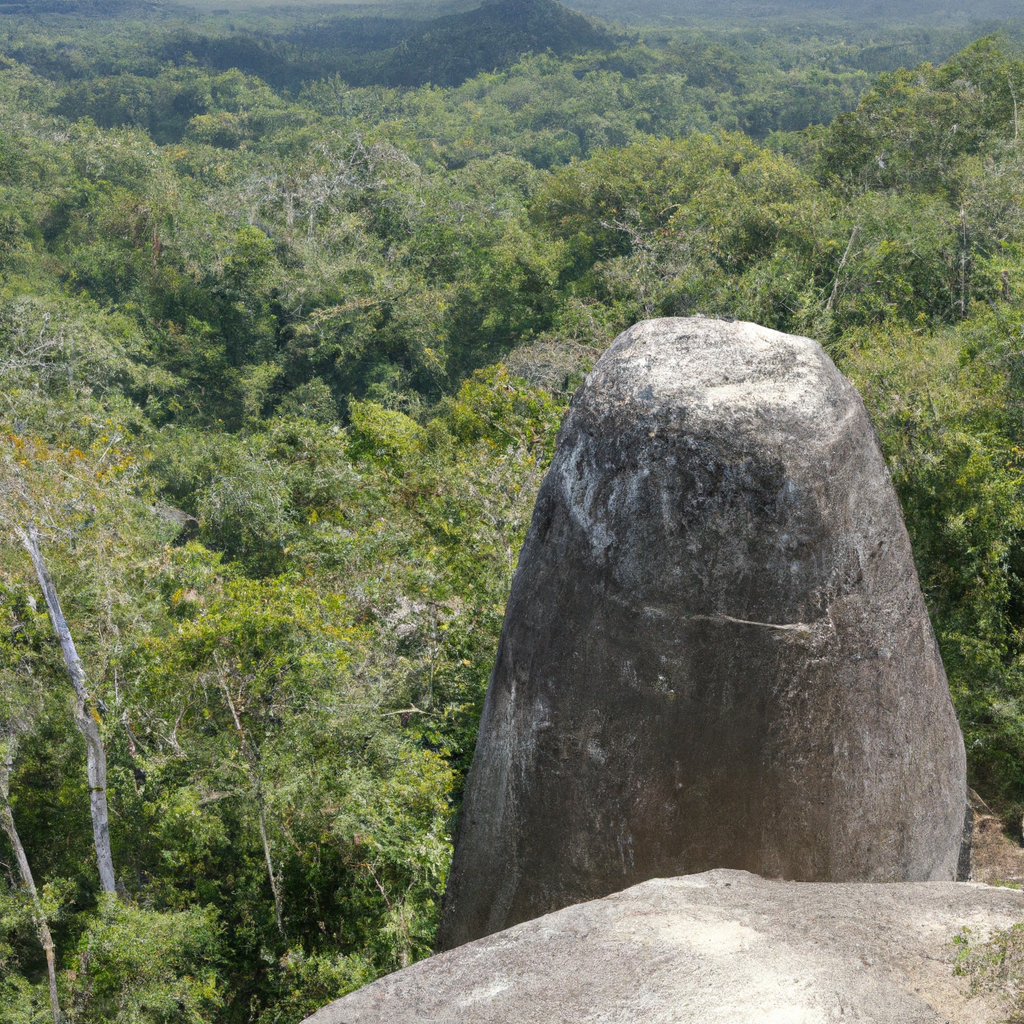
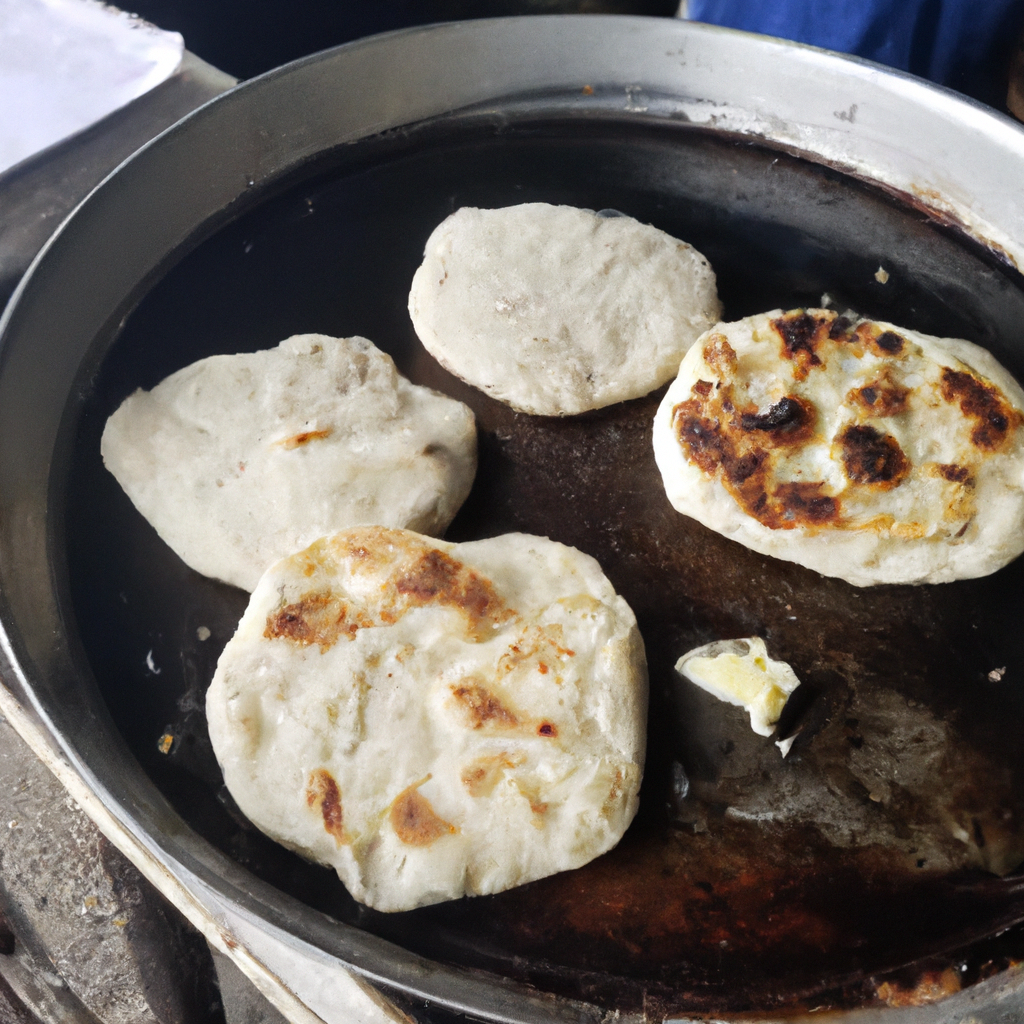
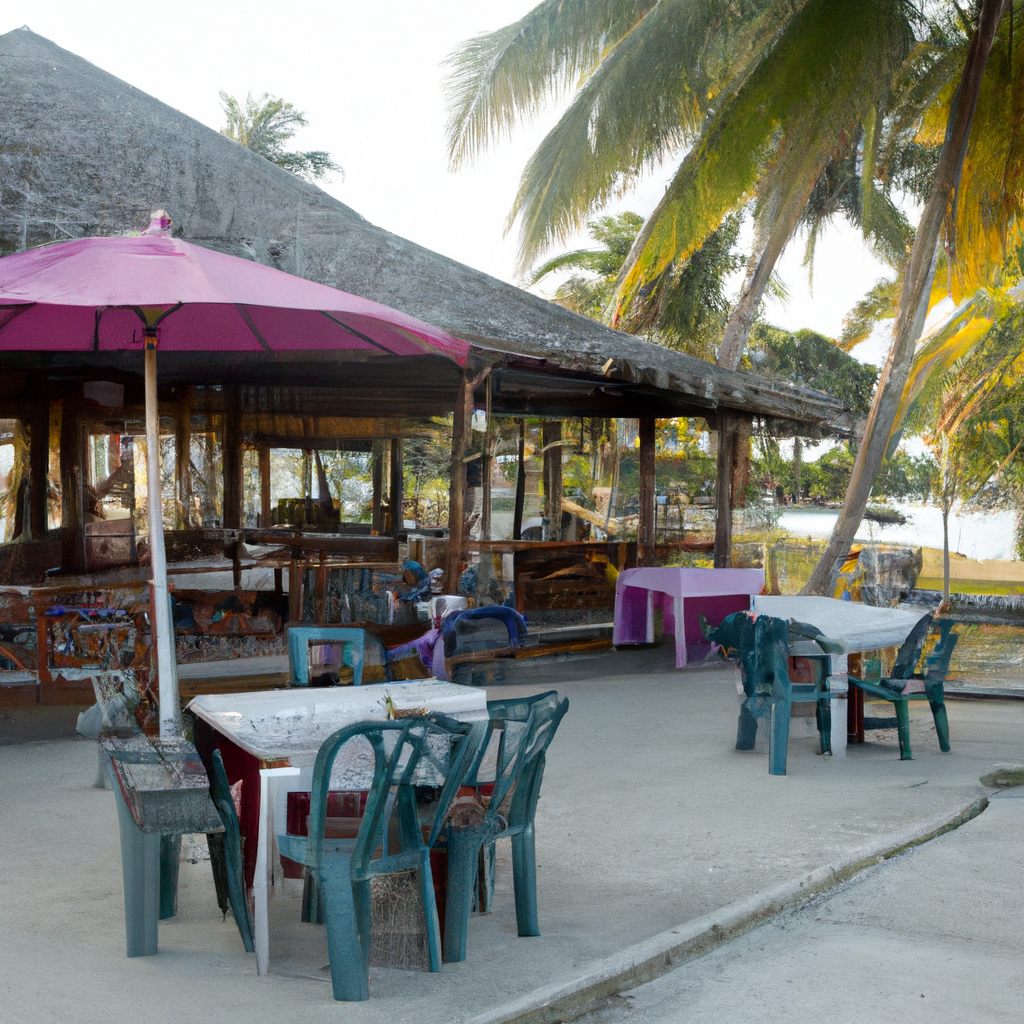
A Brief History of Diving the Great Blue Hole in Belize:

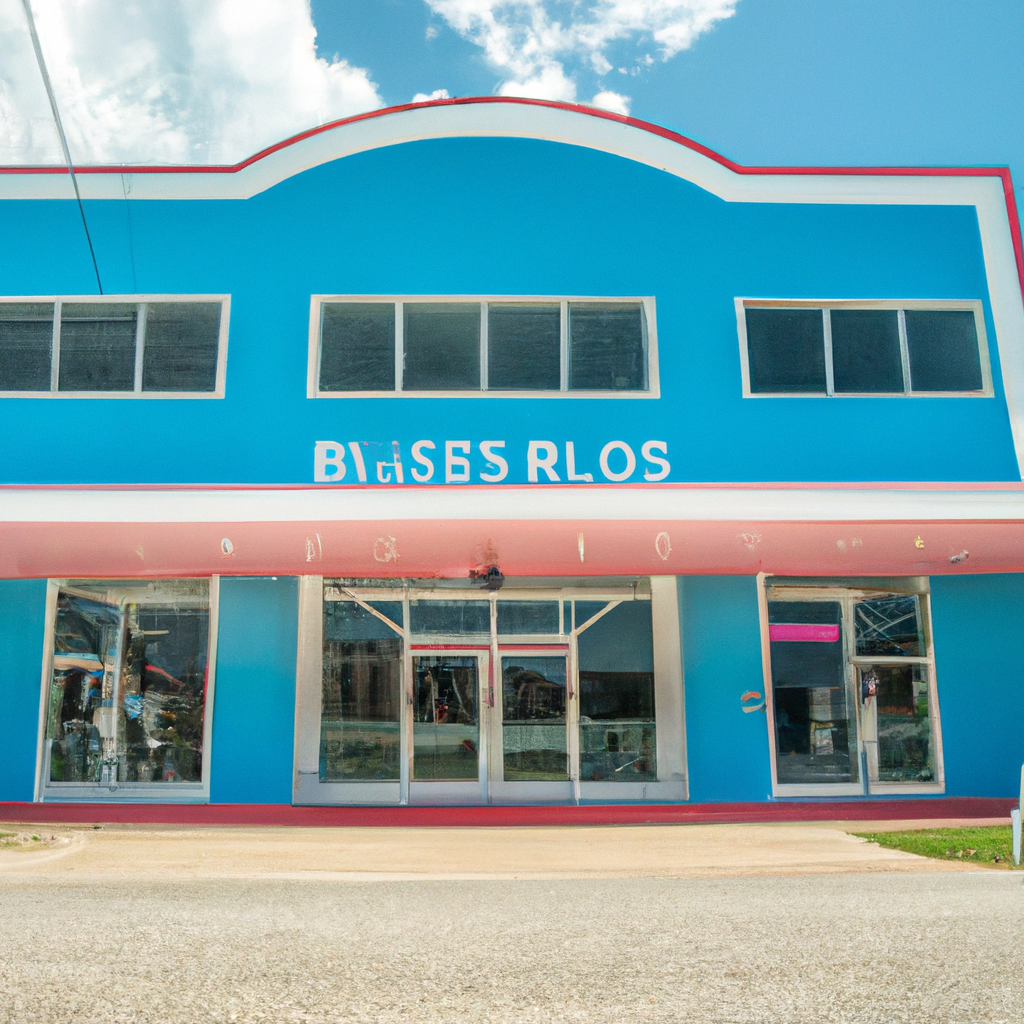
The Rise of Diving Tourism
Jacques Cousteau’s Documentary: The Great Blue Hole, a geological wonder off the coast of Belize, gained international recognition among divers largely due to Jacques Cousteau’s famous documentary in 1971. Cousteau, a renowned French naval officer, explorer, and conservationist, utilized his extensive knowledge of underwater environments to spotlight the mesmerizing depths of the Blue Hole. In his documentary, Cousteau and his team showcased the stunning underwater formations, unique marine life, and the overall beauty of the site, capturing the imagination of divers and nature lovers alike.
Cousteau’s explorations revealed the Blue Hole’s striking circular shape, which is around 1,000 feet (300 meters) across and approximately 407 feet (124 meters) deep. The documentary also highlighted the incredible geological features within, including impressive stalactites and limestone formations, remnants of an ancient cave system formed during the last Ice Age. By documenting the site’s profound beauty and ecological importance, Cousteau not only inspired a generation of divers but also emphasized the need for conservation efforts in marine environments. His work served as a catalyst for increased awareness and appreciation of the ocean’s delicate ecosystems, setting the stage for the Blue Hole’s future as a premier dive site.
Growing Popularity
Top Diving Destination: Since Cousteau’s landmark documentary, the Great Blue Hole has skyrocketed in popularity and is now considered one of the premier diving destinations globally. Divers from all corners of the world are drawn to its unique allure, eager to explore its depths and experience the breathtaking underwater landscape firsthand. The allure of the Blue Hole lies not only in its dramatic visuals but also in the remarkable diversity of marine life found in and around it. The site provides a habitat for various species, including vibrant coral formations, reef sharks, barracudas, and an array of tropical fish, making it a thrilling and varied diving experience.
The growth in popularity has prompted local tourism operators to develop diving tours and establish infrastructure in the surrounding areas, making the site accessible to both novice and experienced divers. Diving schools and certified instructors offer training for beginners, while experienced divers can choose from advanced dives that explore deeper areas of the Blue Hole. The adrenaline rush of diving in this spectacular location, combined with opportunities for underwater photography and exploration, has created a diving culture that continues to thrive.
Furthermore, the Great Blue Hole has also garnered significant attention in the diving community and travel media, being featured in various lists of “top diving spots” worldwide. This recognition has bolstered Belize’s reputation as a world-class dive destination and has contributed to the country’s growing eco-tourism sector. Today, the site stands as a testament to the wonders of the marine world, inspiring divers and conservationists alike to appreciate and protect the delicate ecosystems that thrive in Belize’s coastal waters.
The journey of the Great Blue Hole from a relatively obscure natural wonder to one of the most famous diving destinations in the world can be attributed largely to Jacques Cousteau’s pioneering work in marine exploration and conservation. The site continues to attract adventure seekers and nature aficionados, offering unparalleled diving experiences that reveal the breathtaking beauty and biodiversity of the underwater ecosystem. As the Blue Hole maintains its status among diving enthusiasts, it also serves as an essential reminder of the importance of conservation efforts aimed at protecting the ocean’s fragile environments for future generations to explore and cherish.
Modern-Day Diving Adventures
Preserving Natural Beauty: In recent years, the importance of sustainable tourism has gained prominence, particularly in sensitive ecological areas like the Great Blue Hole. As the site attracts increasing numbers of eco-conscious travelers, local authorities and tour operators have recognized the need to balance tourism growth with environmental preservation. Efforts are underway to implement sustainable practices that minimize the ecological impact on the surrounding marine environment while ensuring that visitors can enjoy and appreciate its natural beauty.
Strategies have been developed to protect the fragile coral reefs and marine ecosystems that surround the Great Blue Hole. This includes establishing guidelines for responsible diving and snorkeling practices, enforcing limits on the number of divers allowed at one time, and promoting the use of eco-friendly equipment and practices among tour operators. Educational initiatives are also emphasized, where guides provide information about the importance of marine conservation, the challenges posed by climate change, and the need for responsible behaviors while interacting with the underwater environment. These efforts are vital in preserving the area’s integrity for future generations.
Furthermore, local organizations and conservation groups are engaged in monitoring the ecological health of the site, studying factors such as water quality, coral health, and biodiversity. By collaborating with stakeholders, they aim to create a comprehensive approach that aligns sustainable tourism with conservation goals, fostering a sense of stewardship among visitors and the local community.
Diverse Offerings
Guided Tours and Water Sports: Today, the Great Blue Hole offers a wide array of activities that not only cater to diverse visitor interests but also promote environmental awareness and appreciation for Belize’s marine ecosystems. Guided tours led by knowledgeable and certified dive masters enable participants to explore the unique underwater structures of the Blue Hole while learning about its geological significance and ecological importance. These tours often include educational components, where guides share insights on marine life, reef ecology, and the conservation efforts in place to protect the area.
In addition to diving tours, there are numerous opportunities for diving lessons and certifications, making it accessible for beginners eager to experience the thrill of underwater exploration. Many dive shops prioritize sustainable practices, providing training on eco-conscious snorkeling and diving methods, such as reef etiquette and the importance of avoiding contact with coral and marine life.
Beyond diving, visitors can enjoy a range of water sports that align with eco-friendly principles. Kayaking and paddleboarding are popular options, allowing travelers to navigate the pristine waters surrounding the Great Blue Hole while preserving the tranquility of the marine environment. These activities also provide an excellent vantage point for observing wildlife, including dolphins, rays, and various fish species, enhancing the overall appreciation of Belize’s natural beauty.
Additionally, many tour operators engage in community initiatives that promote sustainability, contributing to local conservation projects and supporting marine research. This multi-faceted approach ensures that visitors not only have a memorable experience but also leave with a greater understanding of their role in protecting the delicate ecosystems they encounter.
The focus on sustainable tourism in and around the Great Blue Hole highlights the commitment to preserving Belize’s natural heritage while accommodating an increasing influx of eco-conscious travelers. Through a combination of responsible practices, educational offerings, and diverse activities, visitors have the opportunity to explore this breathtaking environment while raising awareness about the importance of conservation. As both tourism and environmental stewardship continue to evolve, the Great Blue Hole stands as a shining example of how careful management can create a harmonious balance between enjoying nature and safeguarding it for the future.
Early Settlement and Development
Rich Historical Legacy: The region that is now Belize has a profound historical legacy rooted in the ancient Maya civilization, which flourished from around 2000 BC to the arrival of the Spanish in the 16th century. The Maya were known for their advanced knowledge in areas such as mathematics, astronomy, art, and architecture. Today, the remnants of their remarkable civilization can still be explored at numerous archaeological sites throughout Belize.
Sites like Caracol, Xunantunich, and Lubaantun offer an intimate glimpse into the lives of the ancient Maya, featuring impressive temples, plazas, and ceremonial structures constructed from limestone and adorned with intricate carvings and murals. These sites are rich in history, showcasing their connection to agriculture, religion, and trade. The ancient Maya had a complex societal structure, with class distinctions and a powerful priestly ruling elite that governed city-states. The remnants of their civilization, including agricultural terraces and sacred cenotes (natural sinkholes), indicate a deep understanding of their environment and sustainable practices that allowed them to thrive.
The spiritual and cultural influence of the Maya persists in modern Belize, as evidenced by the customs, languages (such as Yucatec and K’iche’), and traditions of the indigenous populations today. Festivals, ceremonies, and rituals performed by contemporary Maya communities reflect centuries of heritage, transmitting their history, mythology, and worldview through generations. Engaging with this rich cultural tapestry provides visitors with a deeper appreciation of Belize’s identity, highlighting the ongoing presence of the Maya in shaping contemporary society.
Colonial Era
European Settlements and Cultural Dynamics: The arrival of European settlers in the 17th century marked a significant turning point in the history of Belize and the wider Central American region. Initially, European powers, particularly the British and Spanish, sought control over trade routes and resources. British settlers, attracted by the lucrative logwood trade, began to establish settlements along the coast, leading to tension with the indigenous Maya and other groups already inhabiting the region.
This colonial influence introduced new cultural dynamics that continue to shape Belizean society today. The enslaved Africans brought by colonial powers to work in the plantations contributed significantly to the cultural landscape, fostering a rich blend of cultures that includes African, European, and indigenous traditions. The emergence of Creole culture can be traced back to this period, characterized by a distinct language, music, and culinary traditions that reflect the fusion of influences from the various ethnic groups.
The 19th century saw Belize become a fully established British colony, known as British Honduras, which furthered the development of British legal and governmental systems while allowing for diverse populations, including East Indians, Chinese, and Garifuna communities, to settle in the region. The colonial era left an indelible mark on Belize’s identity, with English remaining the official language and British customs being integrated into the social fabric.
Today, the historical context of the colonial era, combined with the legacy of the Maya civilization, creates a unique cultural mosaic in Belize. Festivals, such as Garifuna Settlement Day and Independence Day, reflect this intricate tapestry, showcasing the various influences that contribute to the nation’s vibrant culture. The fusion of traditions, beliefs, and practices continues to thrive, shaping the character of modern Belize and fostering a sense of pride in its diverse heritage.
The dual heritage of the Mayan civilization and the colonial era has profoundly influenced the development of Belizean society, shaping its cultural identities and practices over centuries. The remnants of the ancient Maya civilization serve as a powerful reminder of the country’s historical significance and ongoing connection to its indigenous roots. In parallel, the colonial legacy has fostered a rich mix of cultural influences that contribute to the unique tapestry of Belizean life today. By exploring these historical narratives, visitors gain a greater appreciation of Belize’s diverse heritage and its evolution into a vibrant and multifaceted nation.
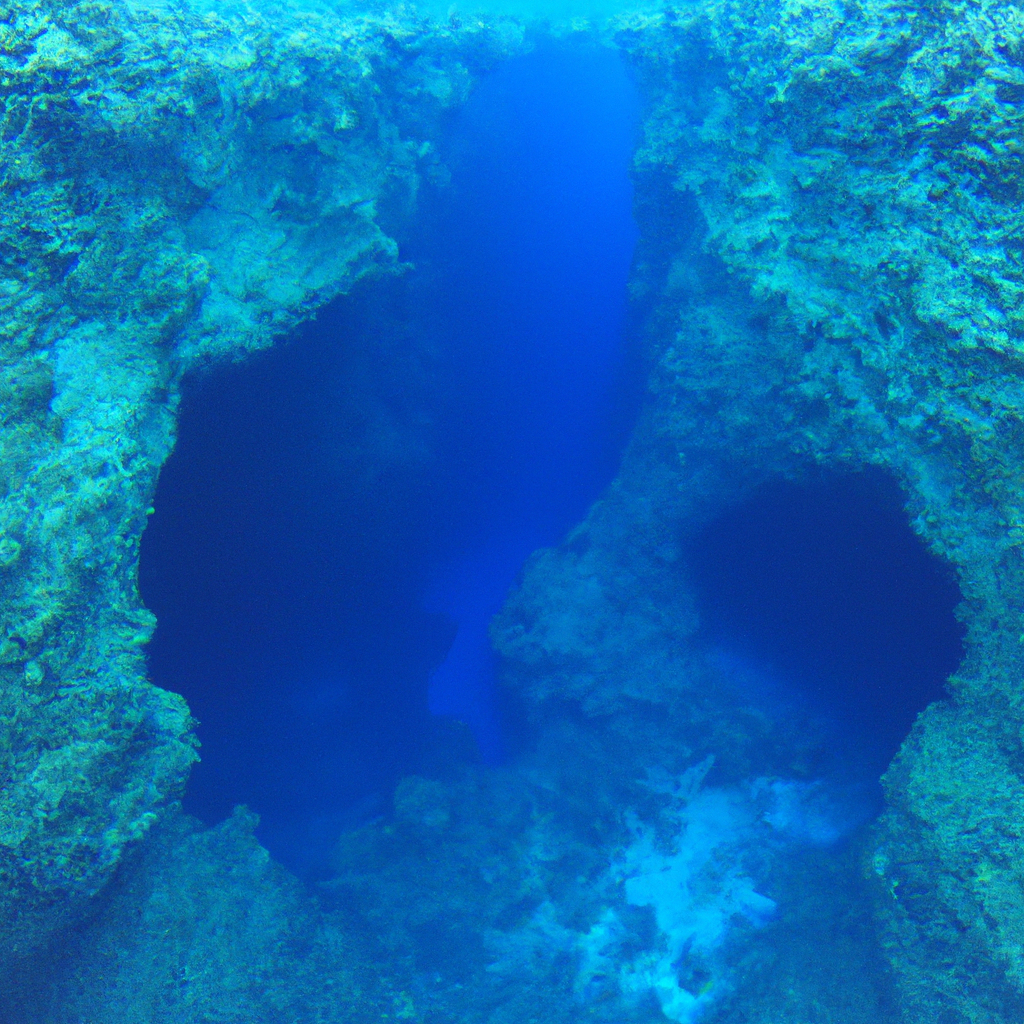
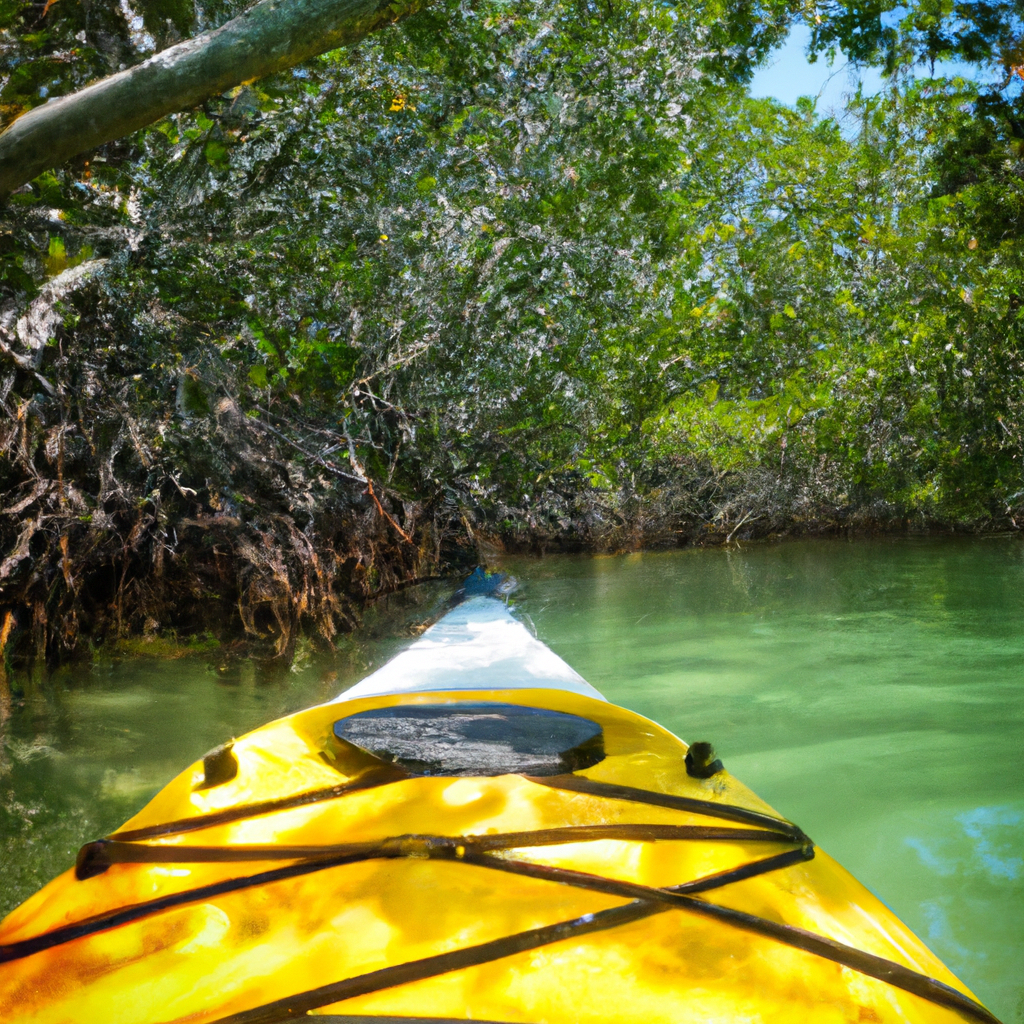
Fun Facts About Diving the Great Blue Hole:
Size and Dimensions: The Great Blue Hole is an extraordinary natural formation, measuring over 1,000 feet (approximately 305 meters) across and around 400 feet (about 124 meters) deep. This vast marine sinkhole is one of the largest of its kind on the planet, forming part of a larger submerged cave system during the last Ice Age when ocean levels were lower. Geologists believe that the Blue Hole originated as a limestone cave before it collapsed, creating a spectacular circular abyss that captivates divers and tourists alike.
The unique dimensions of the Blue Hole contribute to its visual appeal and ecological significance. The deep blue water contrasts sharply with the surrounding shallower reefs, creating a striking visual effect that can be appreciated from both the surface and below. Its size not only makes it a significant feature on marine charts but also plays a crucial role in local ecosystems. The depth of the Blue Hole creates various underwater environments, providing diverse habitats for marine life, including reef fish, sharks, and other species that thrive in both light and deeper darkness.
The popularity of the Great Blue Hole among divers is fueled by its accessibility and breathtaking beauty. Many dive operators offer specialized excursions to the site, allowing adventurers to explore its depths and witness the remarkable formations and marine life that inhabit this unique geological phenomenon.
Record-Breaking Feature
UNESCO World Heritage Site: The Great Blue Hole is a prominent feature of the Belize Barrier Reef, which is recognized as a UNESCO World Heritage Site. Designated as such in 1996, the reef system is one of the largest and most diverse coral reef ecosystems in the world, stretching over 190 miles (approximately 300 kilometers) along the coast of Belize. The inclusion of the Blue Hole in this designation underscores its ecological importance and highlights the need for conservation efforts to preserve its unique marine environment.
The Belize Barrier Reef is home to a vast array of marine biodiversity, including over 500 species of fish, hundreds of species of corals, and numerous species of marine mammals and reptiles. The Blue Hole serves as an integral component of this ecosystem, providing critical habitats for both pelagic and reef fish as well as larger predators like sharks and rays. The area is not only a hotspot for recreational diving but also plays a vital role in the broader ecological health of the Caribbean Sea.
The recognition of the Great Blue Hole as one of the Seven Natural Wonders of the World further amplifies its status and appeal. This designation places the Blue Hole alongside other iconic natural sites, emphasizing its exceptional beauty and significance in global geography. As more travelers seek to experience these wonders firsthand, the Great Blue Hole stands out as a symbol of natural maritime beauty and a reminder of the importance of environmental preservation.
The Great Blue Hole is not only a marvel of size and depth but also a vital feature within the rich biodiversity of the Belize Barrier Reef. Its recognition as a UNESCO World Heritage Site and one of the Seven Natural Wonders of the World amplifies its importance on both ecological and cultural fronts. As visitors flock to witness its beauty and explore its depths, ongoing conservation efforts remain crucial to protect this unique underwater environment for generations to come. The Great Blue Hole exemplifies the intersection of natural wonder and environmental responsibility, highlighting the need for sustainable practices to preserve Earth’s precious ecosystems.
Fun Facts About Wildlife
Abundant Fish Species: The Great Blue Hole is a biodiverse haven, hosting over 500 species of fish that contribute to its vibrant underwater ecosystem. Among the most notable inhabitants are nurse sharks and hammerhead sharks, both of which grace the waters of the Blue Hole and its surrounding reefs. Nurse sharks, known for their docile nature, often rest on the sandy bottom during the day and can be seen gliding through the waters at dusk when they become more active. They are often encountered by divers, offering a thrilling yet safe experience for those looking to observe these fascinating creatures up close.
Hammerhead sharks, on the other hand, are one of the most iconic species in the ocean. Recognizable by their distinctive head shape, they are often seen in schools, particularly during certain seasons when they can be found near the Blue Hole. Their presence represents not only the health of the marine environment but also attracts divers interested in witnessing these magnificent predators in their natural habitat.
In addition to these sharks, the Great Blue Hole teems with a rich diversity of other marine life, including colorful reef fish such as parrotfish, angelfish, and wrasses, as well as larger species like tarpon and groupers. The interplay of these species within the ecosystem creates a complex food web that sustains the marine community. Coral reefs act as critical habitats for many of these fish, providing shelter, breeding grounds, and resources necessary for their survival. Protecting this diverse marine life is paramount, as it contributes to the overall health and balance of the Caribbean marine ecosystem.
Unique Coral Formations
Stalactites and Underwater Caves: One of the most striking features of the Great Blue Hole is its unique geological formations, which serve as a testament to the history of the region. The Blue Hole contains stunning stalactites that were formed during the last Ice Age, when the area was above sea level. Over thousands of years, as water levels rose, these formations became submerged, creating an otherworldly landscape that divers and explorers can witness today.
The stalactites, often found in clusters, hang dramatically from the ceiling of the sinkhole, providing a glimpse into the geological history of the site. They represent a time when the cave system was dry, allowing for the formation of these mineral deposits, and now submerged in the depths of the ocean, they tell a story of environmental change and the Earth’s dynamic nature.
The underwater caves and tunnels that accompany these stalactites add an element of exploration and adventure for divers. As they navigate through these intricate passages, they can discover not only fascinating rock formations but also a variety of marine species that have made these caves their home. The interplay of light and shadow in the depths creates stunning visuals, enhancing the diving experience and captivating those who venture beneath the surface.
In combination, the diverse marine life and the unique geological features of the Great Blue Hole contribute to its status as a must-visit destination for both recreational divers and marine enthusiasts. The wonders of the Blue Hole exemplify the intersection of biology and geology, showcasing the remarkable natural beauty that defines this iconic site.
The Great Blue Hole is a treasure trove of marine biodiversity and geological wonders, offering visitors a chance to experience some of the most stunning underwater environments in the world. With over 500 species of fish, including the majestic nurse and hammerhead sharks, and unique coral formations such as stalactites and underwater caves, this remarkable site highlights the intricate connections between marine life and geological history. As awareness grows about the importance of preserving such natural wonders, ongoing conservation efforts will be vital in ensuring that future generations can continue to experience and appreciate the beauty of the Great Blue Hole and its vibrant ecosystems.
Excitement Awaits You!
🌅 Imagine waking up to…
A breathtaking sunrise over the mountains, with the promise of adventure in the air.
✨ Feel the thrill of…
Exploring hidden caves and diving into the depths of the Great Blue Hole, where every moment is filled with wonder.
👨👩👧👦 Perfect for Everyone
Whether you’re traveling solo, as a couple, or with family, Diving the Great Blue Hole in Belize promises memories you’ll cherish forever!
Book Your Dream Vacation Today
Don’t wait! Adventure is calling, and Diving the Great Blue Hole in Belize is ready to greet you with open arms.
✨ Click here to plan your trip! Start your journey today and experience the magic of Belize!

